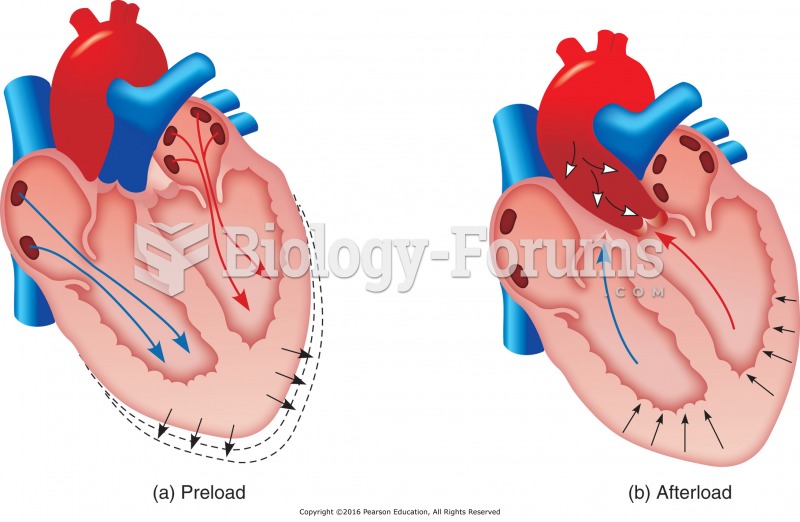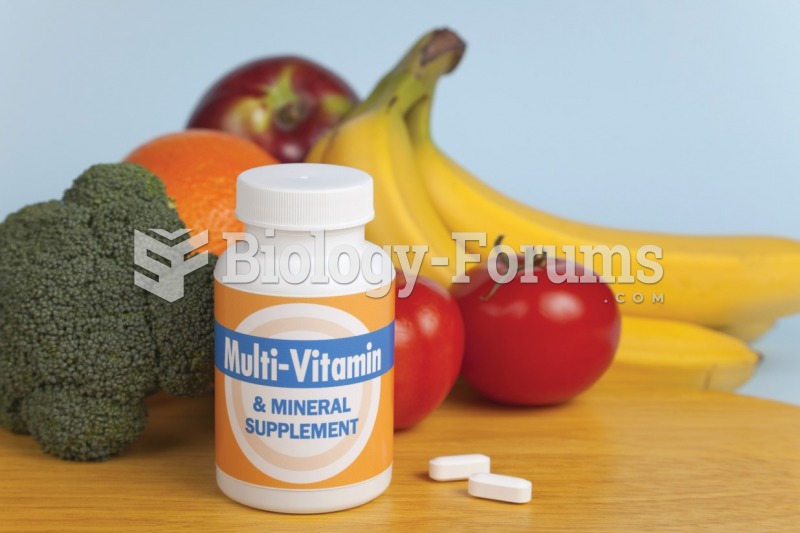|
|
|
For pediatric patients, intravenous fluids are the most commonly cited products involved in medication errors that are reported to the USP.
There are approximately 3 million unintended pregnancies in the United States each year.
It is believed that the Incas used anesthesia. Evidence supports the theory that shamans chewed cocoa leaves and drilled holes into the heads of patients (letting evil spirits escape), spitting into the wounds they made. The mixture of cocaine, saliva, and resin numbed the site enough to allow hours of drilling.
Illness; diuretics; laxative abuse; hot weather; exercise; sweating; caffeine; alcoholic beverages; starvation diets; inadequate carbohydrate consumption; and diets high in protein, salt, or fiber can cause people to become dehydrated.
It is widely believed that giving a daily oral dose of aspirin to heart attack patients improves their chances of survival because the aspirin blocks the formation of new blood clots.
 a) Preload is the degree to which the ventricles are filled with blood and the myocardial fibers are ...
a) Preload is the degree to which the ventricles are filled with blood and the myocardial fibers are ...
 A partial stream sampling exhaust probe being used to measure exhaust gases in parts per million ...
A partial stream sampling exhaust probe being used to measure exhaust gases in parts per million ...





